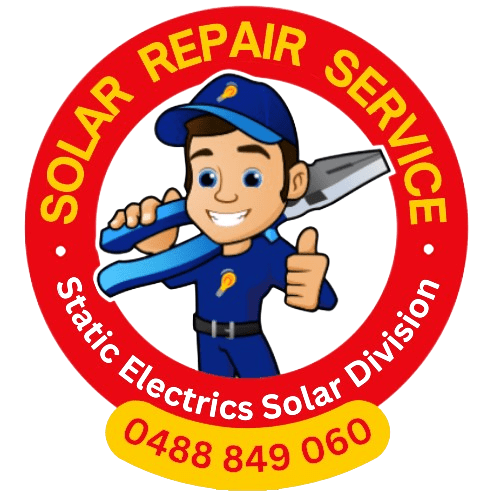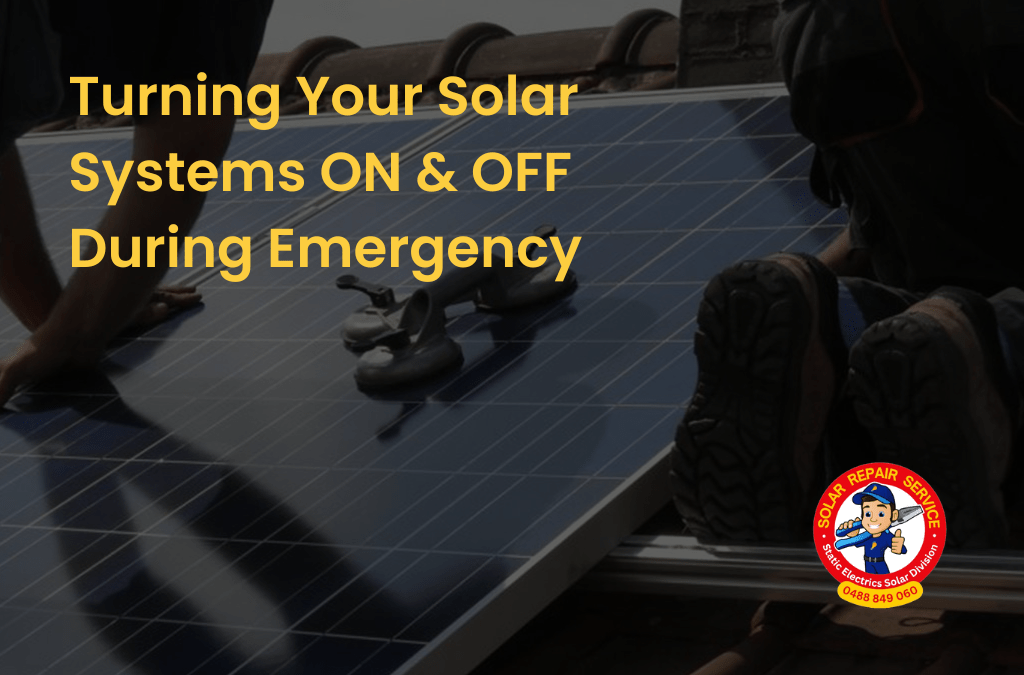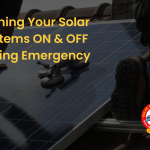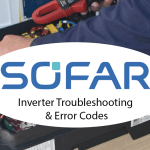Solar power is safe, reliable, and increasingly popular in homes across Brisbane, the Sunshine Coast and far beyond. But sometimes emergencies happen. Knowing how and when to safely shut down your solar system can prevent damage, reduce risks, and protect your home and family.
In our exclusive blog, we’ll guide you through:
- When and why your solar system might need shutting down
- Step-by-step instructions for safely powering it off
- How to safely restart your system after the issue has been resolved.
Can solar panels be turned off?
Can you turn off solar panels? Yes! Your solar system is specifically and carefully designed to be shut down safely. All solar installations are required by Australian safety standards to have clearly labelled isolation switches, allowing homeowners and emergency personnel to quickly disconnect the system in an emergency. This is essential for effective emergency solar management.
It’s important to understand that shutting down your system does not damage it – in fact, it’s recommended during certain emergencies or maintenance procedures, such as when you’re learning how to turn off solar panels for cleaning.
When should you shut down your solar system?
You should consider shutting down your solar system under these circumstances:
Fire emergency: If there’s a fire in or around your property, shutting down the solar system reduces the risk of electrical hazards and allows emergency responders to work safely.
Flooding or severe storm damage: If there’s significant flooding or structural damage from hail or storms, turning off your solar power prevents electrical hazards and protects equipment.
Electrical faults: If you detect unusual behaviour from your system, such as sparks, overheating, or unusual noises, shut it down immediately.
Planned maintenance or cleaning: During inspections, maintenance, or when cleaning solar panels, shutting off power is required to ensure safety.
Step-by-step guide: Shutdown procedure for solar system
If you need to shut down your system, here’s a clear solar shutdown procedure to follow safely that will work with just about any Queensland setup.
Step 1: Turn off the AC isolator (Main switch inverter supply)
- Locate the AC isolator switch, usually found next to your inverter – it’s labelled as “main switch inverter supply”.
- Flip this switch to the “OFF” position – and that’s how easy learning how to turn off solar inverter tech is in an emergency!
- This cuts off power flow from your solar system to your home’s electrical system.
Step 2: Switch off the DC isolator (How to turn off solar panels)
- Find the DC isolator switch, usually located close to your inverter or sometimes mounted on your roof near the solar panels.
- Turn this switch to the “OFF” position. This stops power from flowing between your panels and inverter, effectively demonstrating how to turn off solar panels properly.
- Why is knowing how to isolate solar panels like this so important? When performing solar maintenance or cleaning, this step is crucial to prevent electrical current from flowing through your system, reducing the risk of shock or damage.
Step 3: Shut off the solar supply main switch
- This switch is typically located in your home’s main electrical switchboard, clearly labelled as the “solar supply main switch.”
- Turn it off to ensure your system is fully isolated from your household circuits.
Step 4: Confirm your system is off
- Check your inverter display – most inverters will indicate they are no longer generating power.
- Ensure all switches are securely set to the off position.
How to turn on solar panels (Restart procedure)
Once your emergency or maintenance issue has been resolved, safely restarting your solar system is straightforward:
Step 1: Ensure safety
- Confirm the emergency is fully resolved.
- Inspect your solar system for visible damage. If you’re unsure, call a licensed solar electrician.
Step 2: Turn on the solar supply main switch
- Return to your home’s electrical switchboard.
- Flip the “solar supply main switch” back to the “ON” position.
Step 3: Activate DC isolator
- Locate the DC isolator switch near your inverter or panels.
- Turn it to the “ON” position, reconnecting your panels to the inverter.
Step 4: Reactivate the AC isolator (Main switch inverter supply)
- Find the AC isolator switch next to your inverter.
- Switch it to the “ON” position, reconnecting your solar system to your home.
Step 5: Check your inverter
- Verify that the inverter powers up and resumes normal operation.
- It should indicate standard power production within a few minutes.
Important safety tips!
- Never touch exposed wires or damaged components.
- If your inverter or panels show physical damage after an emergency, don’t turn the system back on until a qualified technician has inspected it.
- After extreme weather events, it’s wise to have your system professionally inspected before restarting.
When in doubt, call in the pros
While you can safely shut down and restart your solar system yourself in many cases, certain situations require professional expertise. If you feel unsure about your ability to safely manage your solar system during an emergency, or if you suspect serious damage, call a licensed solar repair specialist immediately.
We’re here to help
At Solar Repair Service, we understand how important it is to keep your solar system functioning safely and efficiently. If you have questions or need urgent help with your solar system, our experienced team is ready to assist all across Brisbane, the Sunshine Coast, Redland Bay, Ipswich, Moreton Bay, Gympie, and beyond.
From inspections and repairs to maintenance and emergency advice, we ensure your solar system delivers safe, efficient, reliable power year after year. Reach out today for prompt, expert support – because safety always comes first.







